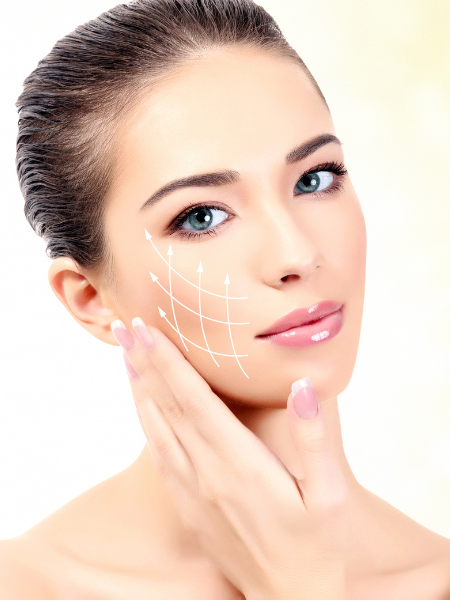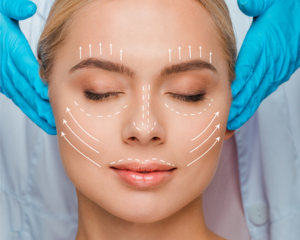
A facelift, or rhytidectomy, is a surgical procedure designed to improve the appearance of the face by tightening underlying facial tissues and removing excess skin. It can address sagging skin, wrinkles, and jowls, resulting in a more youthful and refreshed appearance.
Following your surgeon’s post-operative care instructions carefully will help minimize complications, reduce swelling and bruising, and promote healing. This guide provides essential information on what to do and avoid during your recovery for facelifts in Beverly Hills to ensure a smooth healing process and achieve the best possible outcome.
Following your surgeon’s specific post-operative care instructions is important for successful healing and results. These guidelines typically include medication schedules, wound care, activity restrictions, and specific instructions for cleaning and dressing your incisions. Adhering to these guidelines will help minimize complications and promote optimal recovery.
Elevating your head helps reduce swelling and bruising by promoting proper fluid drainage. Using pillows to prop up your head while sleeping and resting can significantly improve comfort and recovery. Maintaining good posture and avoiding bending over excessively will also aid in reducing swelling.
Cold compresses can reduce swelling and discomfort. Gently applying cold compresses to the treated areas can help soothe the skin and promote healing. Wrapping the compresses in a soft cloth can protect your skin and provide additional comfort.
Taking antibiotics and pain medications as directed is essential for preventing infection and managing discomfort. It’s important to complete the entire course of medication as prescribed, even if you start to feel better. Contact your surgeon if you experience any adverse reactions to the medication.
Proper hydration supports the body’s healing process. Consuming a balanced diet rich in vitamins and minerals provides essential nutrients for tissue repair and overall well-being. Choosing foods that are easy to digest and avoiding excessive caffeine and alcohol can also aid in recovery.
Regular follow-up visits with your surgeon allow for monitoring the healing process, addressing any concerns, and ensuring the best results. Be prepared to discuss any changes in your condition and ask questions during these appointments. Open communication with your surgeon is essential for a successful recovery.
Also Read: Which Non-Surgical Facelift is Right for You?
Engaging in strenuous activities, such as heavy lifting, exercise, or bending over, can increase blood pressure and put unnecessary strain on the surgical site. This can lead to increased swelling, bleeding, and potential complications. You can gradually resume physical activities as recommended by your surgeon.
Smoking and nicotine consumption significantly impair the healing process and can increase the risk of complications, including poor wound healing, infection, and skin discoloration. To enhance recovery, it’s advisable to quit smoking or reduce nicotine use well before surgery.
Sun exposure can damage healing skin, leading to pigmentation changes, scarring, and increased sensitivity. It’s important to protect your face from the sun during the recovery period by using a broad-spectrum sunscreen with a high SPF.
Using skincare products containing retinoids, exfoliants, or other harsh ingredients can irritate healing skin and disrupt the recovery process. You should only apply skincare products recommended by your surgeon.
Look out for signs of complications such as excessive swelling, bleeding, infection, or unusual pain. If you notice any concerning symptoms, contact your surgeon immediately for evaluation and guidance.
Exposure to extreme temperatures, whether hot or cold, can affect healing and comfort. Avoid saunas, hot showers, and cold compresses, as they can impact blood flow and potentially interfere with the healing process.
Also Read: Top 10 Anti-Aging Facelift Benefits
Establishing a gentle skincare routine after recovery is essential for maintaining results for facelifts in Beverly Hills. Consistent cleansing and moisturizing will help keep your skin hydrated and healthy. Incorporate products with hyaluronic acid to boost hydration and promote skin elasticity. Avoid harsh exfoliants and scrubs during the initial healing phase. Gradually reintroduce them as your skin recovers, but always err on the side of caution.
Sun protection is necessary to prevent pigmentation issues and protect scars. Choosing a sunscreen specifically formulated for sensitive skin is recommended. Opt for a broad-spectrum sunscreen with an SPF of 30 or higher to shield your skin from both UVA and UVB rays. Reapply sunscreen every two hours, especially when spending time outdoors. Consider wearing a wide-brimmed hat and sunglasses for added protection.
Tracking your progress and understanding the timeline for final results is important. Swelling may subside gradually, and you must be patient as your face continues to heal. It’s normal for some fluctuations in appearance during the first few months. Regular follow-up appointments with your surgeon will help monitor your healing process and address any concerns. Avoid comparing your progress to others, as individual healing timelines vary.
A balanced diet, regular exercise, and adequate hydration contribute to long-term facelift results. Additionally, limiting alcohol consumption and managing stress can positively impact your overall well-being. Incorporate plenty of fruits, vegetables, and lean proteins into your diet to nourish your skin. Engage in low-impact exercises like walking, swimming, or yoga to improve circulation and promote healing. Prioritize sleep and relaxation techniques to reduce stress levels and support skin health.
 Don’t Rush Back into Your Regular Routine
Don’t Rush Back into Your Regular RoutineReturning to normal activities too soon can strain the facial tissues and impact healing. It’s important to gradually resume social and work activities as recommended by your surgeon. Rushing the healing process can lead to setbacks and worsen results.
Applying makeup before your surgeon gives clearance can increase the risk of infection or irritation. Follow your surgeon’s guidelines for when and how to safely reintroduce makeup. Premature application of makeup can interfere with the healing process and potentially lead to complications.
If recommended by your surgeon, gentle massage techniques can help prevent scar tissue build-up. Follow the surgeon’s instructions on when and how to perform these massages. Consistent massage, when appropriate, can contribute to a smoother and more natural appearance.
Remember that healing takes time, and everyone’s experience is unique. Focusing on your own progress rather than comparing yourself to others can help manage expectations and reduce stress. Unrealistic comparisons can lead to unnecessary anxiety and dissatisfaction.
Successful recovery for facelifts near me involves a combination of careful adherence to post-operative instructions and a commitment to self-care. Key dos include following your surgeon’s advice, keeping your head elevated, applying cold compresses, taking prescribed medications, staying hydrated, eating nutritious foods, and attending follow-up appointments.
On the other hand, avoiding strenuous activities, smoking, sun exposure, unapproved skincare products, complications, and extreme temperatures is key. For long-term recovery, maintaining a gentle skincare routine, protecting your skin with sunscreen, monitoring your progress, and adopting a healthy lifestyle are essential. Additionally, avoiding rushing back into your regular routine, applying makeup too soon, and excessive comparisons can contribute to a smoother recovery.
Every patient’s healing journey is unique. Patience is key as your body undergoes the repair process. By following Dr. Aric Park’s guidance and practicing self-care, you can enjoy the long-term benefits for facelifts in Beverly Hills.
Contact us today!